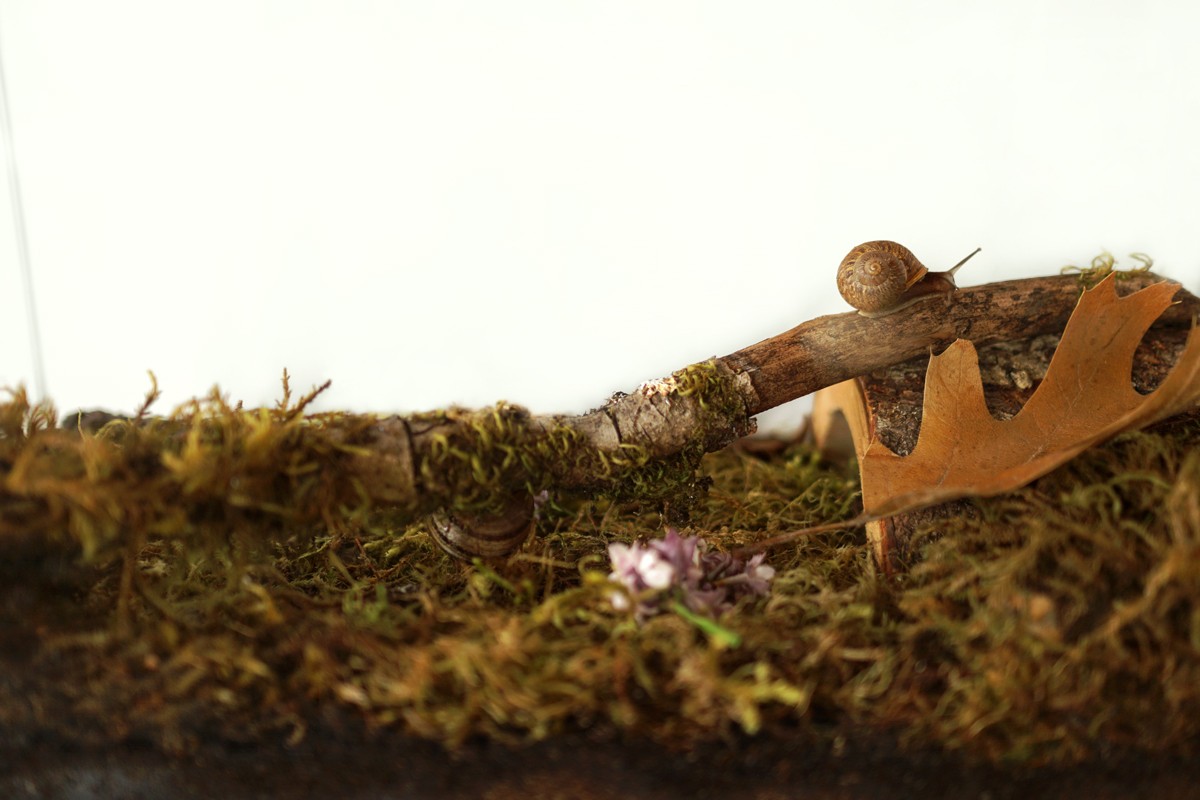Garden snails are increasingly popular as pets, and for good reason. They are incredibly low-maintenance, fascinating to observe, and can even enjoy gentle handling. These gentle creatures, belonging to the mollusk family rather than insects, offer a unique pet ownership experience. With a lifespan that can extend up to 20 years in captivity, choosing to keep snails is a commitment to a long-term companion. Finding snails is easiest after rain in your garden, as they are naturally nocturnal and thrive in moist conditions. Snails are social creatures, often enjoying the company of their own kind. Just like any pet, providing them with the right habitat and consistent food supply is key to their well-being. Having kept snails for years, we’ve learned firsthand how rewarding these quiet pets can be.
Choosing the Right Terrarium for Your Pet Snails
Selecting the appropriate terrarium is the first step in creating a comfortable home for your pet snails. The size of the enclosure depends on the number of snails you plan to keep. A minimum of a 5-gallon glass tank is recommended for a couple of snails, but a 10-gallon tank offers more space, especially if you intend to house more. A good rule of thumb is to allocate at least 1 gallon of space per snail. Snails do not require external heat sources, but proper ventilation is essential. Ensure your terrarium has a removable, tight-fitting lid that also allows for air circulation. Glass terrariums with sliding, locking screen tops are ideal as they help maintain humidity and temperature while preventing escapes. Choosing a well-designed terrarium simplifies the process of maintaining the ideal environment for your snails.
Setting Up Your Snail Habitat: Substrate, Moss, and More
Creating a suitable habitat involves layering the terrarium floor with a few inches of pesticide, chemical, and fertilizer-free substrate. It’s crucial to avoid bagged potting soil as it may contain substances harmful to snails. Sand, pebbles, and gravel are also unsuitable as snails enjoy burrowing. Sterilized soil specifically designed for pet terrariums is the best option. While garden soil might seem accessible, it can harbor parasites and unwanted organisms. If you opt for garden soil, sterilizing it using recommended methods is advisable. Next, add a generous layer of sphagnum moss. This is excellent for maintaining humidity levels and provides a soft, padded surface. Snails also benefit from nibbling on sphagnum moss and burying themselves within it. Avoid peat moss, as it is too acidic for snails. Keep the substrate consistently damp by moistening it with water. Snails are natural climbers, so enrich their environment with sticks, bark pieces, branches, and leaves. Rocks are not recommended due to the risk of snails falling from the terrarium sides and damaging their shells. Provide ample crawling spaces and hiding spots. Hollowed logs or nooks created with large leaves, such as oak leaves, work well. You can also introduce live plants or grasses, ensuring they are non-toxic to snails through thorough research.
Maintaining a Healthy Habitat for Happy Snails
Position your snail terrarium in a location away from direct sunlight to prevent overheating. Maintaining humidity is crucial. Mist the terrarium substrate regularly with filtered water using a clean spray bottle. The goal is to keep the environment moist but not waterlogged. Daily misting with a fine spray is usually sufficient. Consistent moisture encourages activity and mimics their natural environment. Regularly remove any snail waste and uneaten food to keep the habitat clean. A more thorough cleaning should be performed once or twice a month to maintain hygiene and prevent odors.
Caring for Your Pet Snails: Diet, Handling, and Safety
Garden snails are herbivores and thrive on a diet of fresh, raw vegetables and fruits. It’s important to avoid acidic fruits. Calcium is essential for shell health, and protein is also necessary for their overall well-being. A varied diet is key. Snails particularly enjoy leafy greens, carrots, dandelion leaves, cucumber, apple, and flowers. Daily feeding is recommended. Always wash food thoroughly before offering it to your snails to remove any potentially harmful residues. Provide a shallow dish of filtered water for drinking and bathing. Handling snails is safe, but always ensure both you and children wash hands thoroughly with soap and water both before and after handling. This is a general hygiene practice for handling any animal, helping to prevent the spread of pathogens. Instruct children not to put their hands in their mouths, rub their eyes, or handle food before washing their hands after interacting with snails. Safety should always be a priority when keeping any pet.

